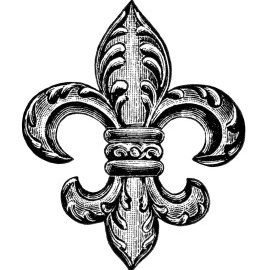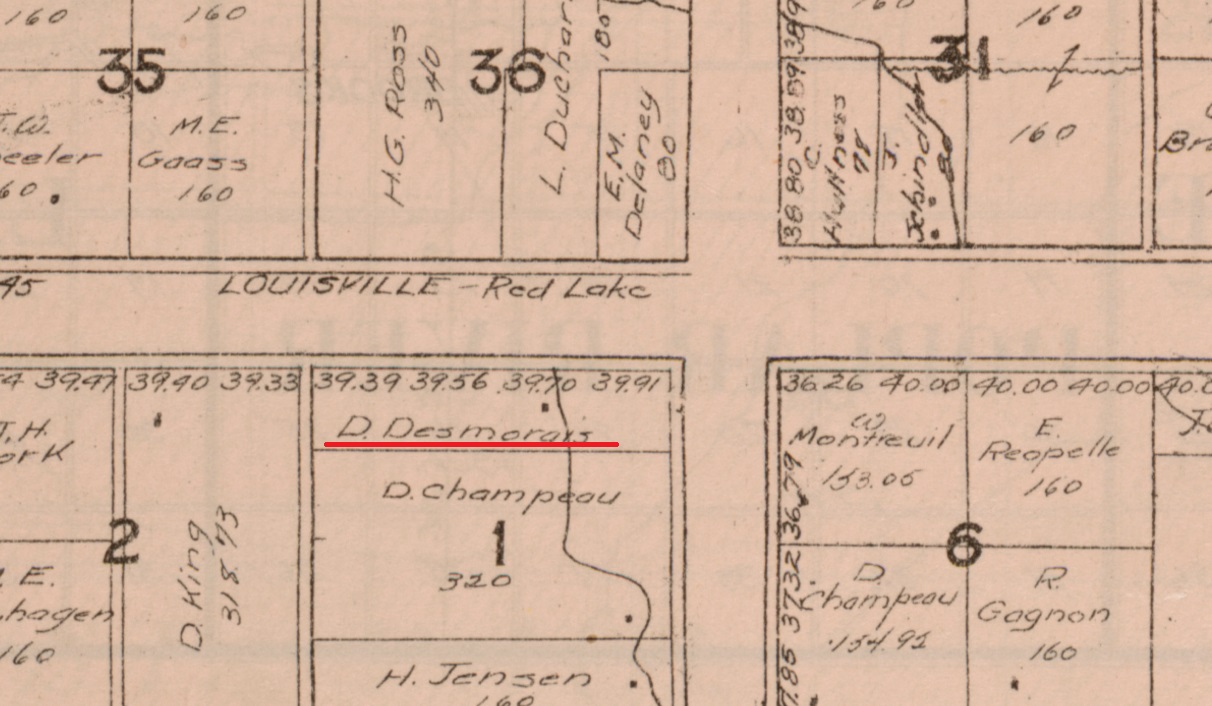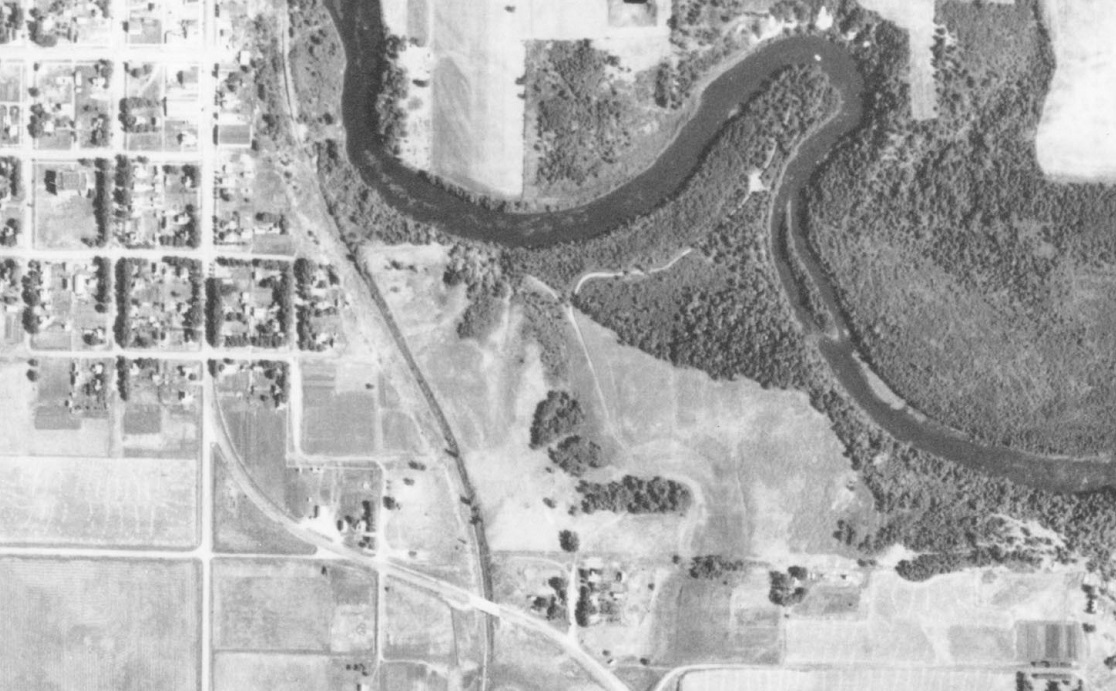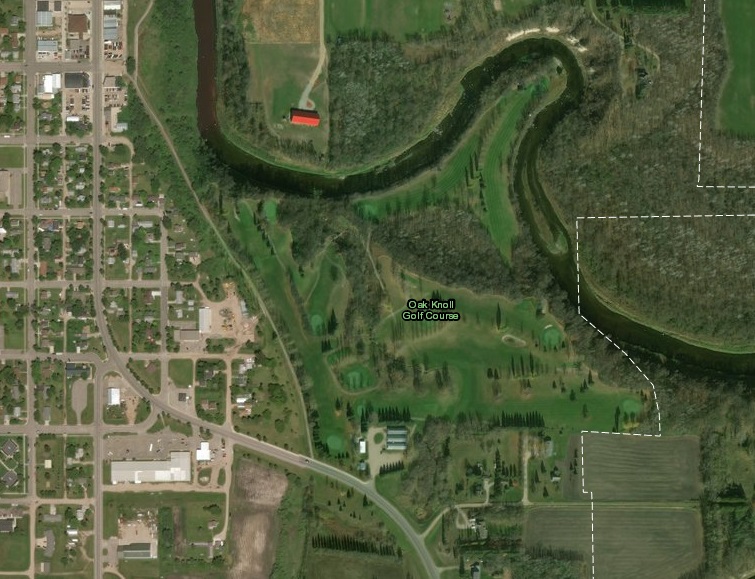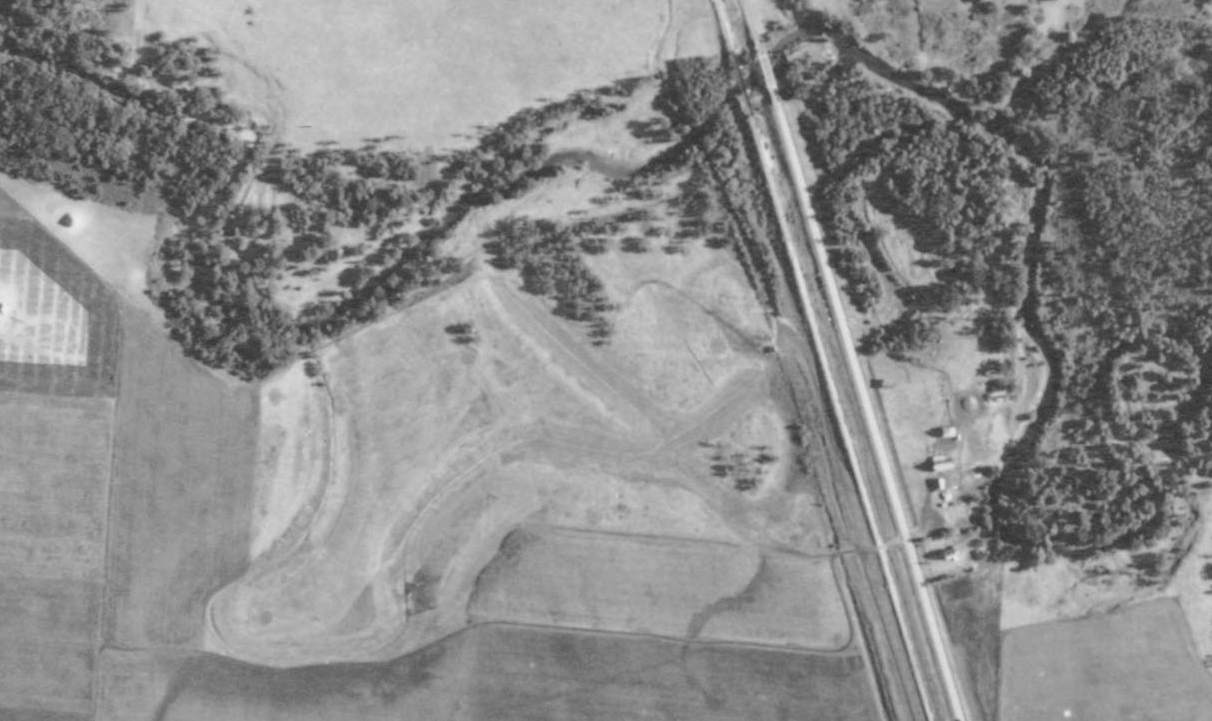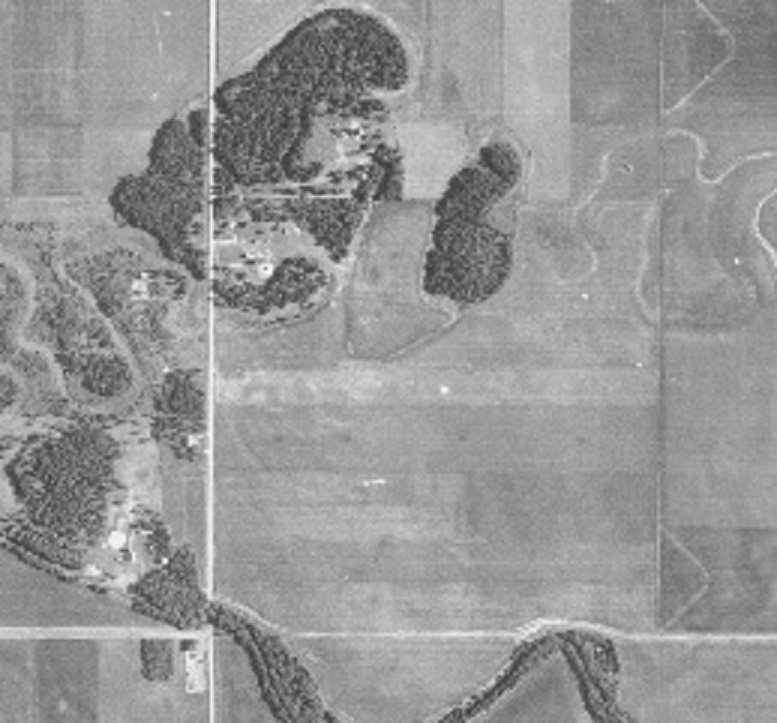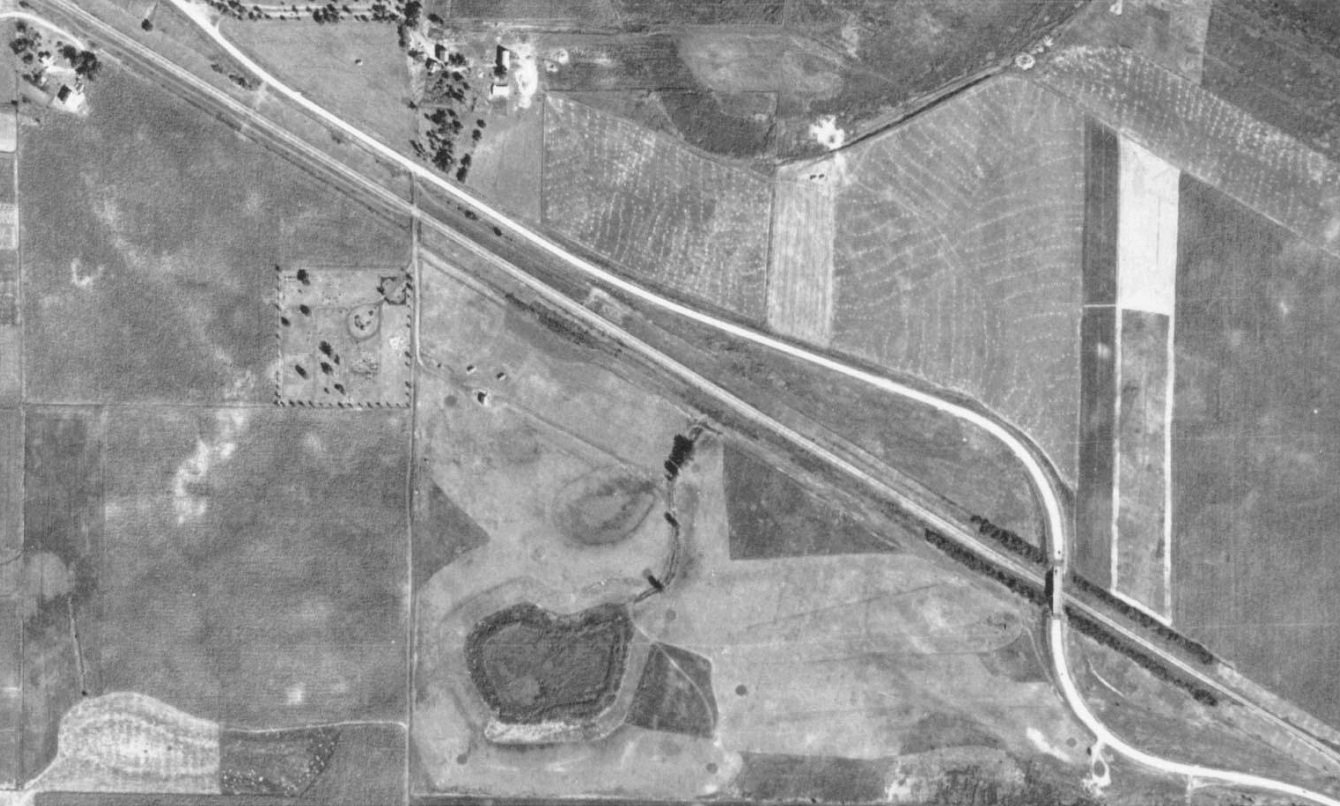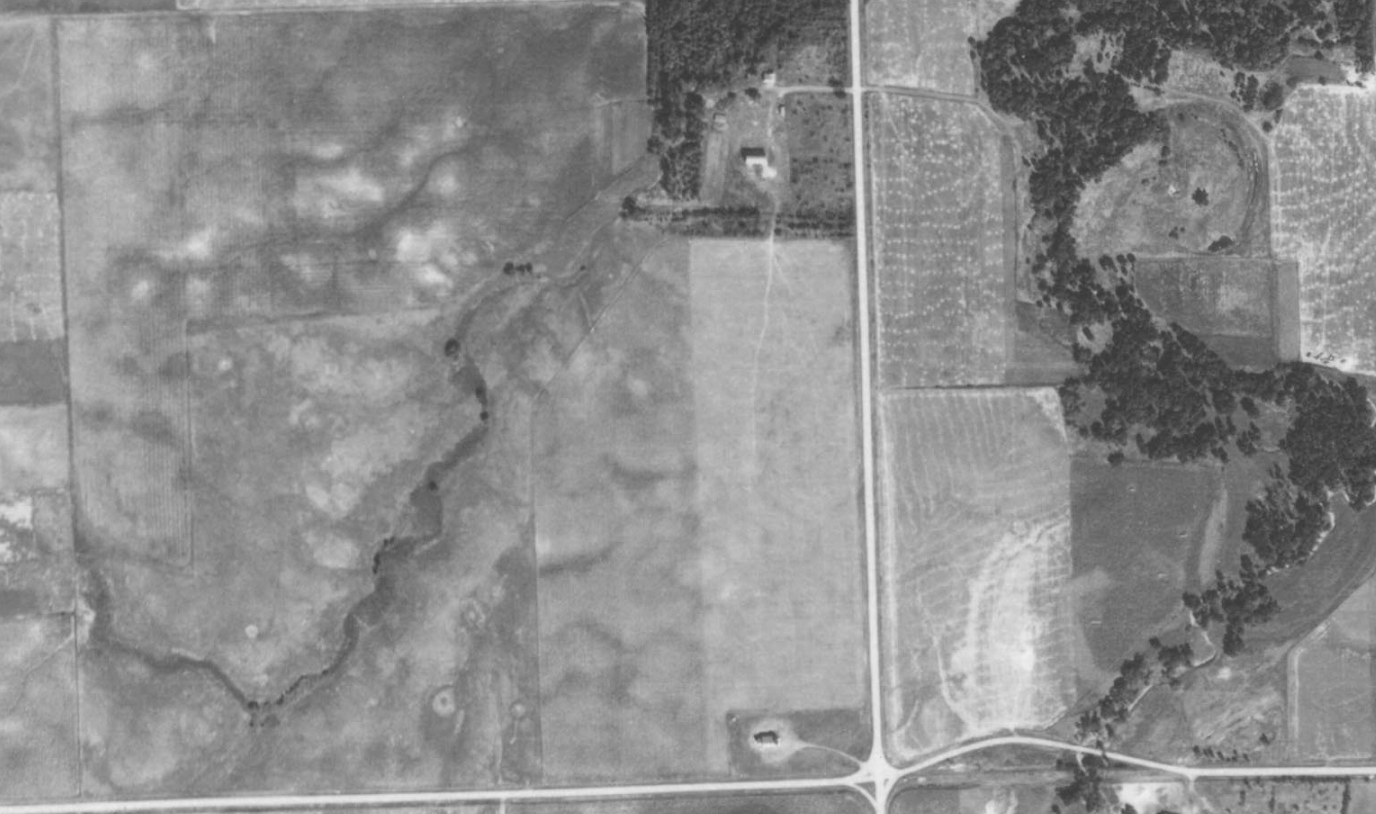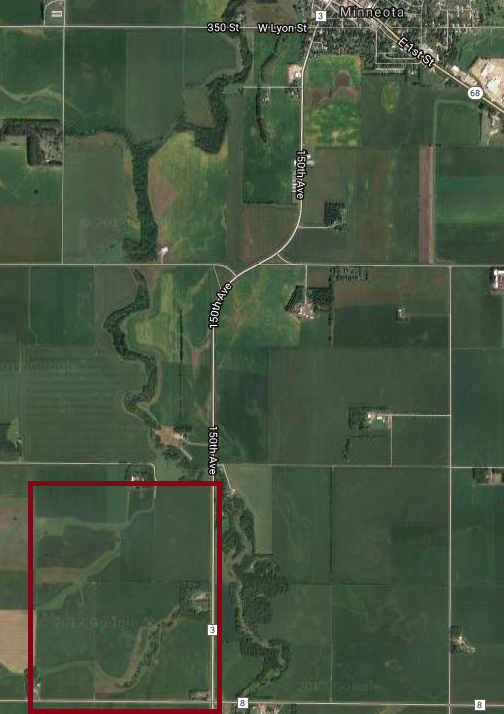For a place so unassuming, the lost golf course at Gonvick did have its moments.
I never said they were momentous. I said only that they were moments.
The lost golf course with the prophetic name — Lost River Golf Course — was established shortly before 1960, according to the admittedly sketchy information I could come up with — one or two word-of-mouth accounts, nothing that I could find in black and white. The course was south of downtown Gonvick, a north-central Minnesota city of 282, and immediately south of Minnesota Highway 92, which cuts diagonally through the city. Just to the south of the lost-course grounds flows the Lost River, so named, it is said, because it once passed under a bog until the bogs were drained.
There was nothing assuming about Lost River Golf Course. It was a small, public nine-holer, so devoid of frills that one paid greens fees at a gas station just off the highway and then went off to play. The routing essentially consisted of seven par-3 holes that ringed two par-4s.
Still, even in a city whose population has never exceeded 375, Gonvick deserves kudos for carrying a golf course through approximately four decades. Lost River was said to have lasted until close to 2000 — again, I could never pin down an exact closing date, with at least a half-dozen sources differing on whether it made it into the 21st century.
“It was a shorter course, but people in the area did support it,” said Rick Fischer, who played Lost River as a youth in the early 1970s and who eventually went on to become the activities director at Sauk Centre High School. Fischer remembered that a drive-in, like the gas station basically adjacent to the golf course, served as the clubhouse, and Corinne Richards, editor of The Leader-Record newspaper of Gonvick and Clearbrook, remembered that patrons would bring side dishes to the drive-in for club events.
Richards also remembered Lost River Golf Course’s brush with international recognition. (It’s true, but I suppose I should issue a hyperbole alert.)
“We had an exchange student from Norway who played the course,” Richards said. When the student returned to his homeland, Richards added, he gained playing privileges at European courses by showing his Lost River membership card.
Fischer also remembered a kid from up the road in Bemidji sweeping into town in the early 1970s and taking the golf course by storm. The kid’s name was Bill Israelson, and Fischer recalled that “Izzy” was probably 12 or 13 years old and barefoot when he came down to Gonvick and won the Lost River shortstop.
That is confirmed, and double confirmed.
“Billy Israelson burned up the Gonvick course to repeat as champion” of the shortstop, the Bemidji Pioneer reported on Aug. 21, 1972, noting that Israelson’s winning score was 3 under par.
Israelson, who went on to win three Minnesota State Amateur championships and played on the PGA Tour, even briefly leading the 1982 U.S. Open at Pebble Beach, confirms the story.
“True,” Israelson, now the professional at The Vintage in Staples, wrote in a Facebook post. “I had won the junior flight the previous two years, so the tournament chairman said I had to play in the men’s championship. I beat my neighbor and defending champ in a playoff after shooting 1 over par for 27 holes. The Gonvick golf course had sand greens. And I had 28 putts for the 27 holes!!”
That’s not all.
“I also met my future wife, Sarah Daman, age 9, and beat her dad Jim who was also playing in champ flight!!”
And about those greens. Lost River likely was among the last half-dozen golf courses in Minnesota with sand greens, which once served to throw an out-of-towner for a loop.
“”We had a salesman who would come by,” said Richards, “and say, why are there flags in the sand traps? The answer was, they weren’t in the sand traps — they were in the greens.”
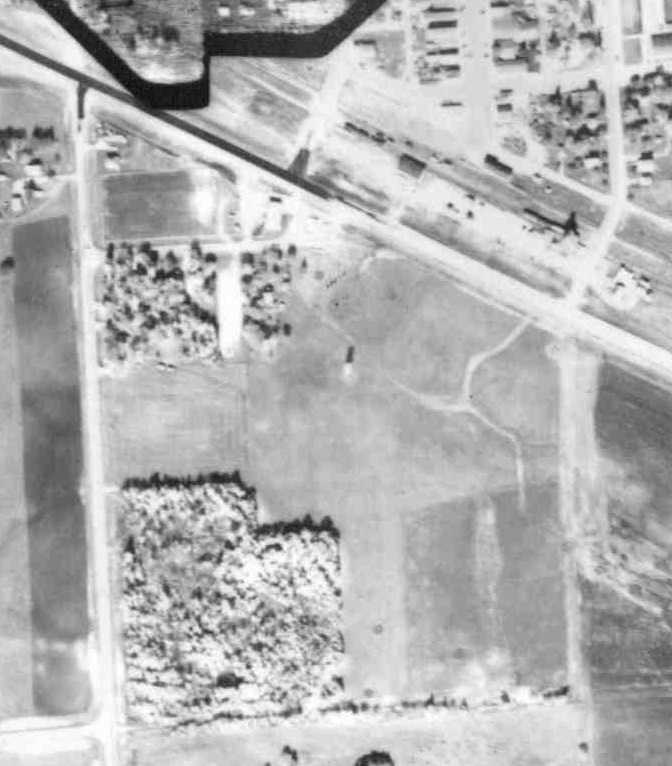
OKLEE
Twenty miles northwest of Gonvick, crossing a couple of county lines from Clearwater to Polk to Red Lake, lies the city of Oklee, where the lost-course tale has similarities to the aforementioned Lost River course.
Both courses were small-town — Oklee’s estimated population is 418, having peaked from the low 500s from the 1960s through the 1980s, more or less the heyday of the Oklee golf course, which likely was in operation from the early 1960s to the mid-1970s.
A smattering of clips from the Oklee Herald provided sketchy details. The earliest I found was from April 1964, urging readers “Don’t Drive Vehicles to the Golf Course!” because the club’s sod had been cut up from previous excursions. A story from May 7, 1964, detailed the club’s spring meeting, which drew an attendance of 36 and at which a membership fee of $5 was set. That story also referenced tournaments that had been played the previous year, which makes 1963 the closest guess I can make as to the course’s founding.
In 1967, the officers included club president Don Fournier. Fees were $7.50 for an annual family season membership and 50 cents per round for public play. (Those are remarkably low fees, even for 50 years ago.)
Better than the Oklee Herald clips, though, a couple of townsfolk offered more information.
“Oklee is pretty flat, so there were no hills (on the golf course), but there were sand traps, I was told,” wrote Bonny Cote, editor of the Oklee Herald. “It was located on the south end of town and today is the home of many houses and a few apartment buildings … also a City Park with picnic shelter, tennis and volleyball courts.”
Cote said she had an uncle who built the first apartment buildings on the grounds of the abandoned course in 1977.
Cote then referred me to Oklee resident Bob Melby, who offered even more salient memories.
The course, Melby wrote in an email, “was planned by a group of local businessmen and owned by the city of Oklee. The local dentist, Dr. Harold Lindquist, was one of if not the lead person. It operated until the mid 1970s at which time it was developed for housing.
“It was a five hole course with sand greens. To play nine holes you replayed holes 1, 2 & 3 and then went from hole 3 to hole 5 for hole 9. Annual fees were 7.50 and daily green fees of .50. It was on an honor system as there was no management staff, although they hired a person to mow the grass. A wooden lock box at the first tee was where you would pay.
“In the first few years a slice on holes 1 or 5 would put you on the local High School football field and a hook on hole 4 put you among grain bins. I played some golf there in my teens to early 20s but I wasn’t involved in the operation.”
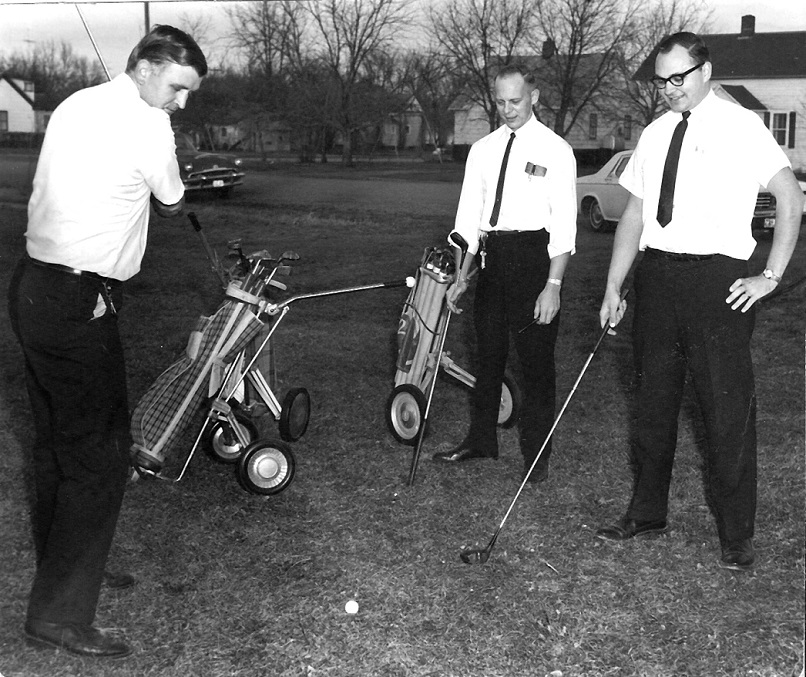
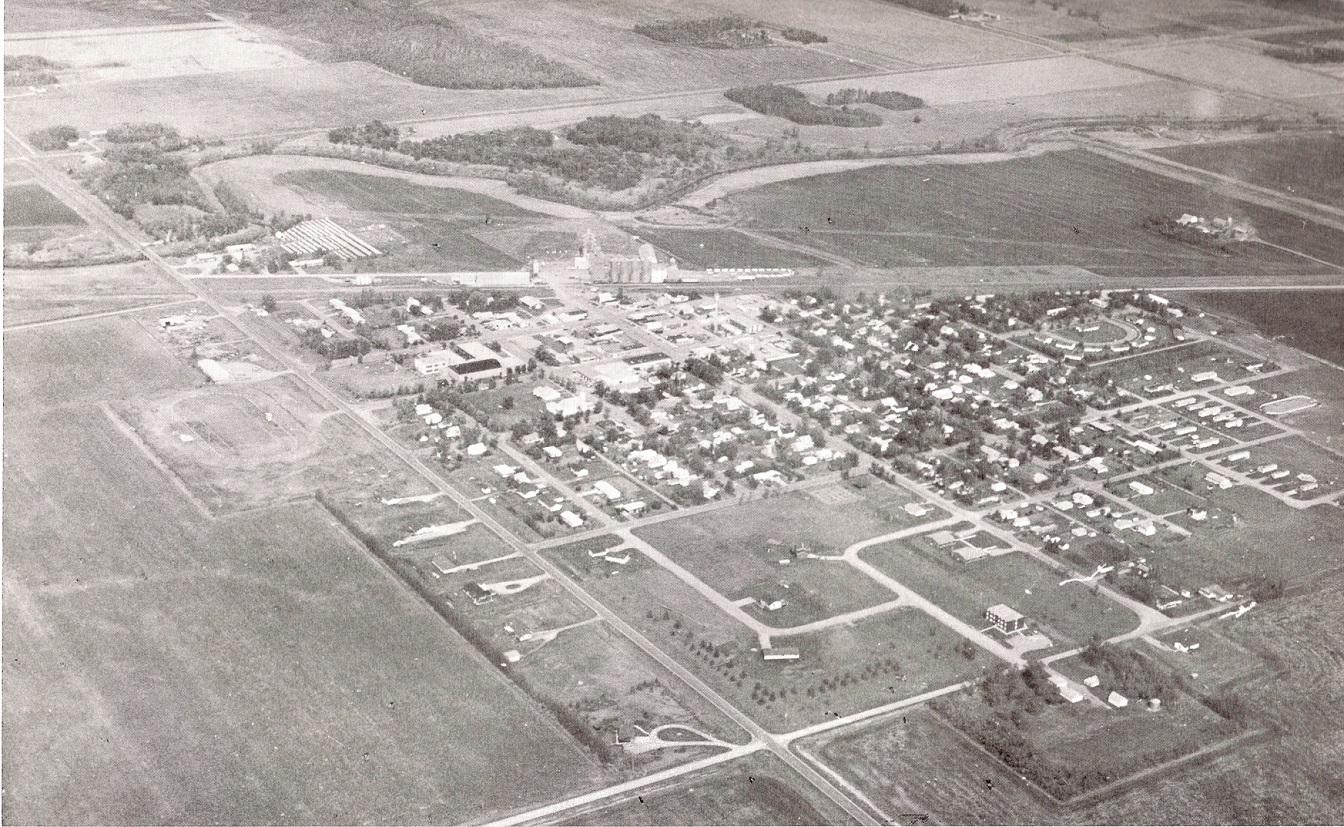
CLEARBROOK
If the lost courses at Gonvick and Oklee were tough nuts to crack — I made at least 25 phone calls just to come up with the sketchy information presented above — the lost course at Clearbrook, or at least the likelihood of one, was tougher than a double-thick macadamia shell sealed with Krazy Glue.
Despite many inquiries, I never did definitively determine whether there once was a golf course in Clearbrook, the next town down Highway 92 southeast of Gonvick.
But I think there probably was.
I came across multiple references to a Clearbrook golf club having participated in Central Minnesota Golf Association and Red River Valley tournaments — in 1930, 1932, 1933 and 1934 — and of Clearbrook golfers playing in tournaments in 1931 in Bemidji (the Birchmont), and other courses in 1930, ’33 and ’34. The most accomplished appeared to be one Wayne Randall, who advanced to the semifinals of a Central Minnesota tournament in 1934 before losing 2 and 1 to D.N. Tallman of Willmar, a former Minnesota Golf Association president and now, posthumously, a member of the MGA Hall of Fame.
Eyeballing aerial photos of the Clearbrook area from 1939, the earliest readily available, revealed nothing that definitely looked like a golf course, extant or abandoned. But the preponderance of mentions in old newspapers establishes, in my mind, that there once was a golf course in Clearbrook.
As always, information or opinions on any of these places are most welcome.
